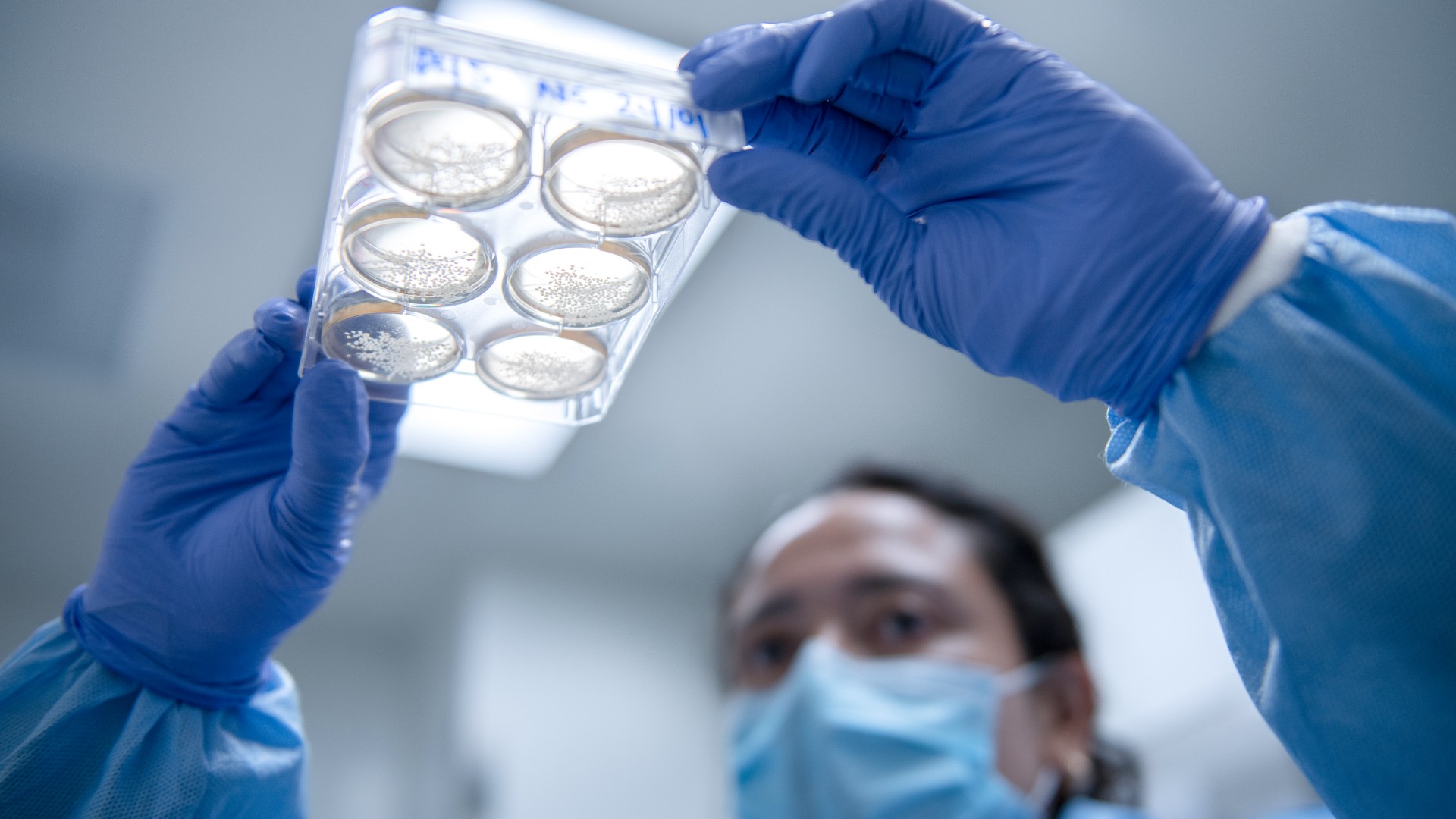
Scientists may have confirmed a theory about the origins of autism by creating miniature, 3D replicas of human brains.
These tiny brains, derived from the stem cells of toddlers, were grown to show what the childrens' brains would have looked like as they developed in the womb.
In the new study, published May 25 in the journal Molecular Autism, scientists drew stem cells from the blood of 10 toddlers with autism and six toddlers without the disorder. At the time, the kids were between 1 and 2 years old. Using growth-inducing chemicals, the researchers grew "minibrains," or brain organoids, from these stem cells in the lab. As they grew, the organoids accurately captured key aspects of how the human brain develops and functions in the womb.
Because each organoid was grown from a toddler's own tissue, it could be considered a mini version of a given child's brain during the first trimester of pregnancy — as if the scientists had turned back the developmental clock.
Related: 'Butterfly effect' may explain some genetic causes of autism
The researchers tracked how the size and growth of these organoids changed during these early stages of embryonic development.
In addition, they assessed the severity of each toddler's present-day autism symptoms, including their ability to pay attention to and communicate with others, their language skills and their IQ. The team also took scans of the toddlers' actual brains to look at the activity of different cells, especially those in brain regions associated with social skills and language.
The team found that the brain organoids of toddlers with autism grew almost three times faster than those without autism, becoming "significantly" enlarged by around 40% between roughly the first and second month of pregnancy, compared with the control group. The researchers also flagged an overall trend: The larger the brain organoid was, the more severe the social symptoms of autism were in the respective toddler.
Previous studies, including research conducted by the authors of the new study, have linked increased brain size in the early years of life to the severity of social symptoms in people with autism. However, this latest research provides a direct link between symptom severity and brain size in individual toddlers, rather than highlighting trends within a group.
"These new findings add interestingly to their [the study authors'] previous work," said Dr. Jonathan Green, a professor of child and adolescent psychiatry at the University of Manchester in the U.K., who was not involved in the study. The new research suggests a "quantitative association" between the degree of brain overgrowth seen in the womb and the degree of later autism symptoms, Green told Live Science in an email.
The results could "potentially add to our knowledge about neural aspects of autism," he added. "It will be very interesting to see if these findings can be replicated by others."
In a separate experiment conducted in the same study, the team also discovered that a higher growth rate and larger size of the brain organoids in toddlers with autism were tied to increased activity in a gene called Ndel1. This gene codes for a protein that helps regulate embryonic brain development, so the scientists said it's likely that dysfunction in Ndel1 partly drives the excessive brain growth seen in autism.
"Determining that NDEL1 was not functioning properly was a key discovery," Alysson Muotri, co-senior study author and a professor of pediatrics at the University of California, San Diego, said in a statement.
The team studied only 16 toddlers, so the study was fairly small. However, these kinds of experiments are "incredibly laborious and expensive," so this is a "pretty impressive dataset," Dr. Laura Andreae, a reader in developmental neuroscience at King's College London who was not involved in the research, told Live Science in an email.
Social symptoms are not the only component of autism. For instance, many people with the condition may also experience symptoms such as repetitive behaviors, delayed movement skills and anxiety, which were not assessed in the new study. This may limit how well the findings generalize to additional people.
Nevertheless, looking forward, the team aims to identify more genes that could be driving excessive brain growth in autism. They hope that, someday, this will lead to the development of new therapies for the disorder.
Ever wonder why some people build muscle more easily than others or why freckles come out in the sun? Send us your questions about how the human body works to community@livescience.com with the subject line "Health Desk Q," and you may see your question answered on the website!







